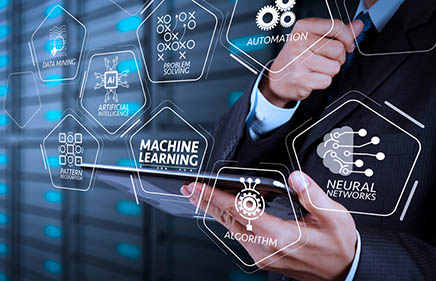Machine Learning (ML) and Artificial Intelligence (AI) are two state-of-the-art technologies which have benefitted a wide range of industries in numerous ways. These smart solutions have led enterprises to opt for artificial intelligence services and machine learning services in order to enhance business productivity, increase profits, and stay ahead of their competitors.
Though both these technologies have played a significant role in excelling the growth of enterprises, people tend to get confused between the two terms. While AI aims at designing of an intelligent, human-like machine, ML is an application of AI that provides machines the ability to learn from the data itself and improve prediction accuracy.
Some of the major differences between AI and ML include:
- Technical Terminology
In technical terms, AI is the science of making intelligent machines that replicate human intelligence and are smart enough to initiate human mind behavior. Though technological advancements have provided much power to the system, AI is still restricted to incorporate biological observations. Whereas ML is a subset of AI that assists the system to automatically learn and improve without being explicitly programmed and offers smart interaction with the computer.
- Working Structure
AI works and responds on the basis of algorithms fed by humans and aims at increasing the chances of success where a computer application initiates the work. While machine learning enables the system to learn and improve on experiences, focusing on the accuracy of the result and success. It is concept where machine acquires the data and learns from it.
- Algorithm Base
AI results in finding of an optimal solution to a problem, while ML assists AI in finding out whether the solution is optimal or not. ML is a complex but efficient technique that works on data trained mathematical models whereas AI functions on algorithms contributed by philosophy, sociology, computer science, and mathematics.
- Goals and Objectives
Primary aim of AI remains to be stimulation of natural intelligence in problem solving and developing a system that mimics human responding behavior in circumstances focusing on decision making. While ML assists in completion of tasks by learning from data and maximizing machine performance. ML makes the machine self-sufficient by allowing it to learn from new data using self-learning algorithms.
AI aims at providing human-like solutions with the help of ML, which is trained to provide best solution based on data evaluation. Thus, even if ML doesn’t pose any real intelligence, it assists AI and helps enterprises in the process of accurate decision making.


















